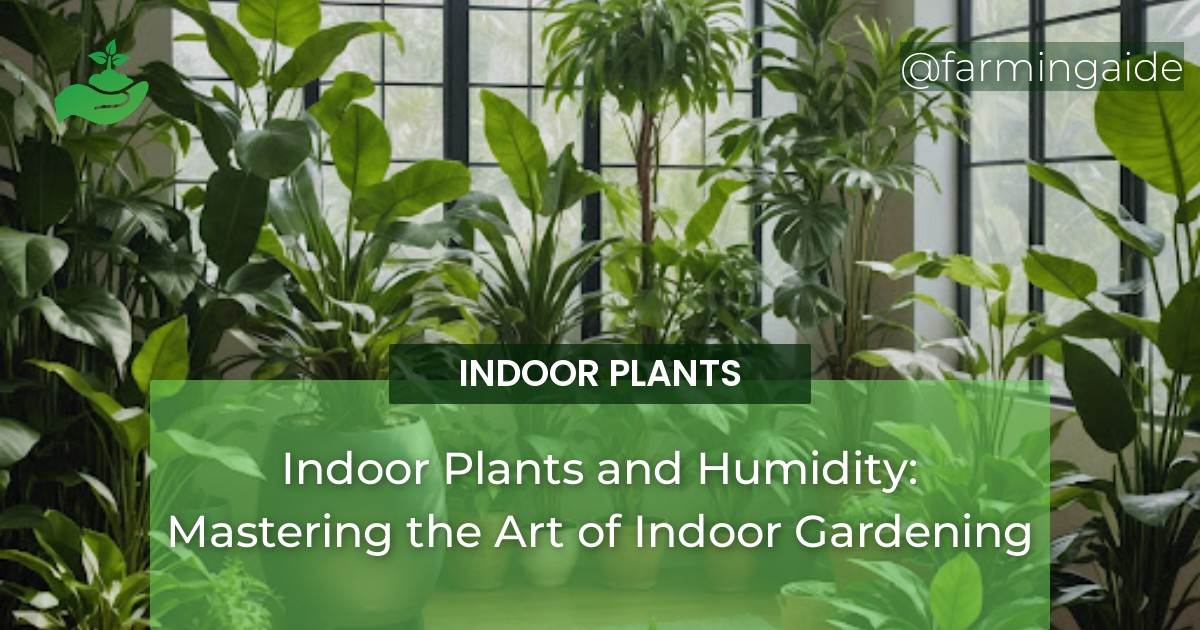Indoor plants have become an essential part of our homes, providing a touch of nature, purifying the air, and boosting our mood. However, many of us struggle to create the perfect environment for our plants to thrive. One crucial aspect of indoor gardening is humidity, which can make or break the health of our plants. In this comprehensive guide, we’ll delve into the world of indoor plants and humidity, covering the importance of humidity, how to measure it, and strategies for controlling it. By the end of this article, you’ll be equipped with the knowledge to create a thriving indoor garden that will make you and your plants happy.
Key Takeaways
- Humidity affects plant health, growth, and development.
- Ideal humidity levels vary among plant species, ranging from 40% to 80%.
- Measuring humidity is crucial to prevent humidity-related problems.
- Natural methods, humidifiers, and dehumidifiers can be used to control humidity.
- Proper ventilation and air circulation are essential for maintaining optimal humidity.
Understanding Humidity in Indoor Gardening
Humidity is the amount of moisture in the air, measured as a percentage. In indoor gardening, humidity plays a critical role in plant health, as it directly affects photosynthesis, transpiration, and growth. Most indoor plants thrive in a humid environment, typically between 40% and 80% relative humidity (RH). However, some plants, like cacti and succulents, prefer drier conditions, while others, like ferns and orchids, require higher humidity levels.
The Role of Humidity in Plant Health
Humidity influences various aspects of plant health, including:
- Water absorption and transport
- Stomatal regulation and gas exchange
- Leaf temperature and transpiration
- Disease resistance and pest susceptibility
Ideal Humidity Levels for Common Indoor Plants
| Plant Type | Ideal Humidity Range (%) |
|---|---|
| Ferns | 50-70 |
| Orchids | 40-60 |
| Succulents | 30-50 |
| Peace Lilies | 50-70 |
| Bamboo Palms | 50-70 |
Assessing Your Indoor Garden’s Humidity
To ensure your plants receive the right amount of humidity, it’s essential to measure the humidity levels in your indoor garden. You can use various tools to assess the humidity:
ALSO READ
Tools for Measuring Indoor Humidity
Hygrometers, thermohygrometers, and psychrometers are commonly used to measure humidity. These devices provide accurate readings, allowing you to adjust the humidity levels accordingly.
Common Signs of Humidity Issues in Plants
Keep an eye out for these signs of humidity-related problems:
- Leaf curl or droop
- Yellowing or browning leaves
- Slow growth or stunted plants
- Fungal diseases or pest infestations
Strategies for Controlling Humidity
To maintain optimal humidity levels, you can employ various strategies:
ALSO READ
Natural Methods to Increase Humidity
Utilize these natural methods to boost humidity:
- Group plants together
- Place plants on a tray with pebbles and water
- Use a humidifier or mist plants regularly
Using Humidifiers and Dehumidifiers
Humidifiers and dehumidifiers can be used to regulate humidity levels:
- Humidifiers: increase humidity, ideal for dry environments
- Dehumidifiers: decrease humidity, ideal for humid environments
Ventilation Techniques for Humidity Control
Proper ventilation and air circulation are crucial for maintaining optimal humidity:
- Open windows for a few minutes daily
- Use fans to circulate air
- Install vents or whole-house ventilation systems
Specific Care Tips for Humidity-Loving Plants
Certain plants have unique humidity requirements:
Ferns and Their Humidity Needs
Ferns thrive in high-humidity environments (50-70% RH) and require:
- Frequent misting
- Humidifier use
- Grouping with other plants
Orchids: The Epiphytic Beauties
Orchids prefer moderate humidity (40-60% RH) and require:
- Good air circulation
- Moderate misting
- Air-potting or basket culture
Preventing and Treating Humidity-Related Problems
To prevent and treat humidity-related issues:
Mold and Mildew Prevention
Prevent mold and mildew by:
- Improving air circulation
- Reducing humidity
- Removing infected plants
Dealing with Over-Humid Conditions
Address over-humid conditions by:
- Improving ventilation
- Using dehumidifiers
- Pruning plants to improve air circulation
Enhancing Your Indoor Garden with Humidity Control
By mastering humidity control, you can create a thriving indoor garden:
Creating a Tropical Oasis at Home
Transform your indoor space into a tropical oasis by:
- Using plants with high humidity requirements
- Incorporating natural elements like wood and stone
- Adding decorative elements like water features or fountains
The Aesthetic Benefits of Balanced Humidity
Balanced humidity enhances the aesthetic appeal of your indoor garden by:
- Promoting healthy plant growth
- Reducing pest and disease issues
- Creating a visually appealing atmosphere
Conclusion: The Lasting Impact of Humidity on Indoor Plants
In conclusion, humidity plays a vital role in indoor gardening, and mastering humidity control is crucial for creating a thriving indoor garden. By understanding the importance of humidity, measuring humidity levels, and employing various strategies to control humidity, you can provide your plants with the ideal environment to flourish. Remember, a balanced humidity level is key to a healthy, happy, and beautiful indoor garden.


